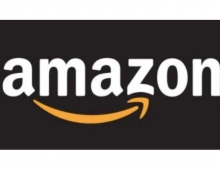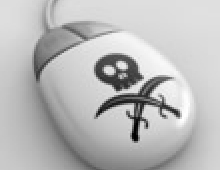
Report: $51 Billion Lost to Software Piracy in 2009
The rate of global software piracy climbed to 43 percent in 2009, a two-percentage-point increase from 2008 fueled in large part by expanding PC sales in emerging markets, according to the seventh annual Business Software Alliance/IDC Global Software Piracy Study.
"Software theft exceeded $51 billion in commercial value in 2009. The public and private sectors need to join forces to more effectively combat an epidemic that stifles innovation and impairs economies on a global scale," said BSA President and CEO Robert Holleyman.
A 43-percent piracy rate means that for every $100 worth of legitimate software sold in 2009, an additional $75 worth of unlicensed software also made its way into the market. This underscores the increasing sophistication of pirates and the urgent need for stronger anti-piracy efforts.
"Software theft hurts not just software companies and the IT sector, but also the broader economy at the local, regional and global levels by cutting out service and distribution firms," said John Gantz, chief research officer at IDC. "Lowering software piracy by just 10 percentage points during the next four years would create nearly 500,000 new jobs and pump $140 billion into ailing economies."
In the United States, software piracy remained at 20 percent, the lowest level of software theft of any nation in the world. However, given the size of the PC market, the commercial value of pirated software in the United States was $8.4 billion in 2009.
IDC, a global market research and forecasting firm, analyzed 182 discrete sets of data from 111 countries around the world to develop the BSA/IDC Global Software Piracy Study. Based on this methodology, BSA and IDC conclude that software piracy has had a profound effect on both consumers and businesses. Additional findings include:
- Piracy rates increased in 19 global economies, up from 16 in 2008.
- The factors driving up the global piracy rate include growth in the consumer PC base and in emerging markets ? both segments with high piracy rates:
o Globally, PC shipments to consumers rose 17 percent in 2009, while shipments to businesses, governments and schools dropped 15 percent.
o The PC markets in Brazil, India and China accounted for 86 percent of the growth in PC shipments worldwide.
- For every dollar of legitimate software sold, another $3-4 in revenue is created for local firms.
- China saw the largest increase in the commercial value of pirated software of any country ? growing $900 million to $7.6 billion.
- India, Chile and Canada each saw the greatest improvement in reducing software theft, each achieving a 3 percentage point decline in their piracy rates in 2009.
"Given the economy, 2009 piracy rates are better than we expected. But incremental improvements are not enough. Few if any industries could withstand the theft of $51 billion worth of their products. To foster innovation and maximize the economic impact of the IT industry, governments must act ? particularly those in fast-growing, high-piracy countries," said Holleyman.
A 43-percent piracy rate means that for every $100 worth of legitimate software sold in 2009, an additional $75 worth of unlicensed software also made its way into the market. This underscores the increasing sophistication of pirates and the urgent need for stronger anti-piracy efforts.
"Software theft hurts not just software companies and the IT sector, but also the broader economy at the local, regional and global levels by cutting out service and distribution firms," said John Gantz, chief research officer at IDC. "Lowering software piracy by just 10 percentage points during the next four years would create nearly 500,000 new jobs and pump $140 billion into ailing economies."
In the United States, software piracy remained at 20 percent, the lowest level of software theft of any nation in the world. However, given the size of the PC market, the commercial value of pirated software in the United States was $8.4 billion in 2009.
IDC, a global market research and forecasting firm, analyzed 182 discrete sets of data from 111 countries around the world to develop the BSA/IDC Global Software Piracy Study. Based on this methodology, BSA and IDC conclude that software piracy has had a profound effect on both consumers and businesses. Additional findings include:
- Piracy rates increased in 19 global economies, up from 16 in 2008.
- The factors driving up the global piracy rate include growth in the consumer PC base and in emerging markets ? both segments with high piracy rates:
o Globally, PC shipments to consumers rose 17 percent in 2009, while shipments to businesses, governments and schools dropped 15 percent.
o The PC markets in Brazil, India and China accounted for 86 percent of the growth in PC shipments worldwide.
- For every dollar of legitimate software sold, another $3-4 in revenue is created for local firms.
- China saw the largest increase in the commercial value of pirated software of any country ? growing $900 million to $7.6 billion.
- India, Chile and Canada each saw the greatest improvement in reducing software theft, each achieving a 3 percentage point decline in their piracy rates in 2009.
"Given the economy, 2009 piracy rates are better than we expected. But incremental improvements are not enough. Few if any industries could withstand the theft of $51 billion worth of their products. To foster innovation and maximize the economic impact of the IT industry, governments must act ? particularly those in fast-growing, high-piracy countries," said Holleyman.





















